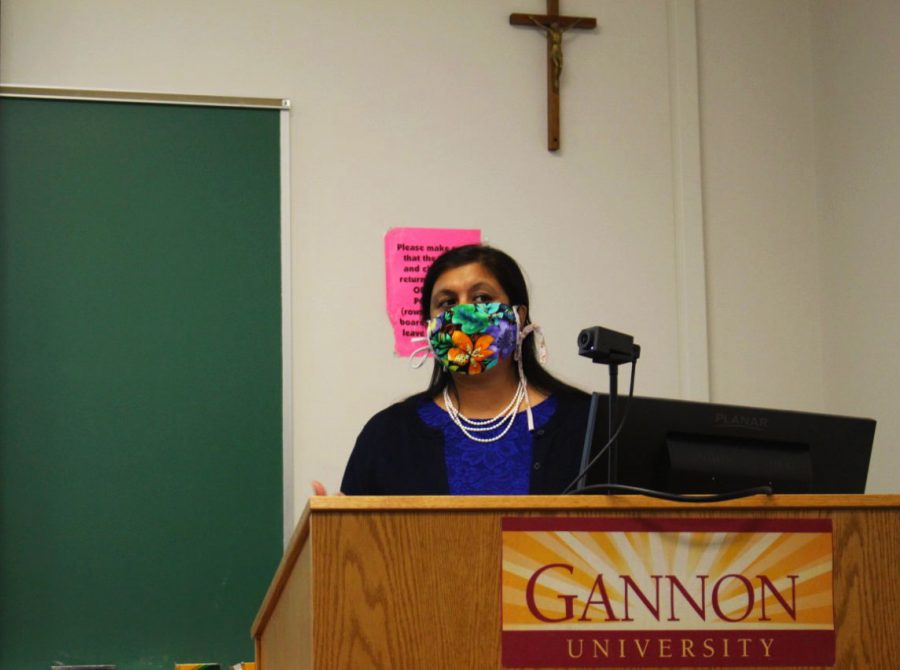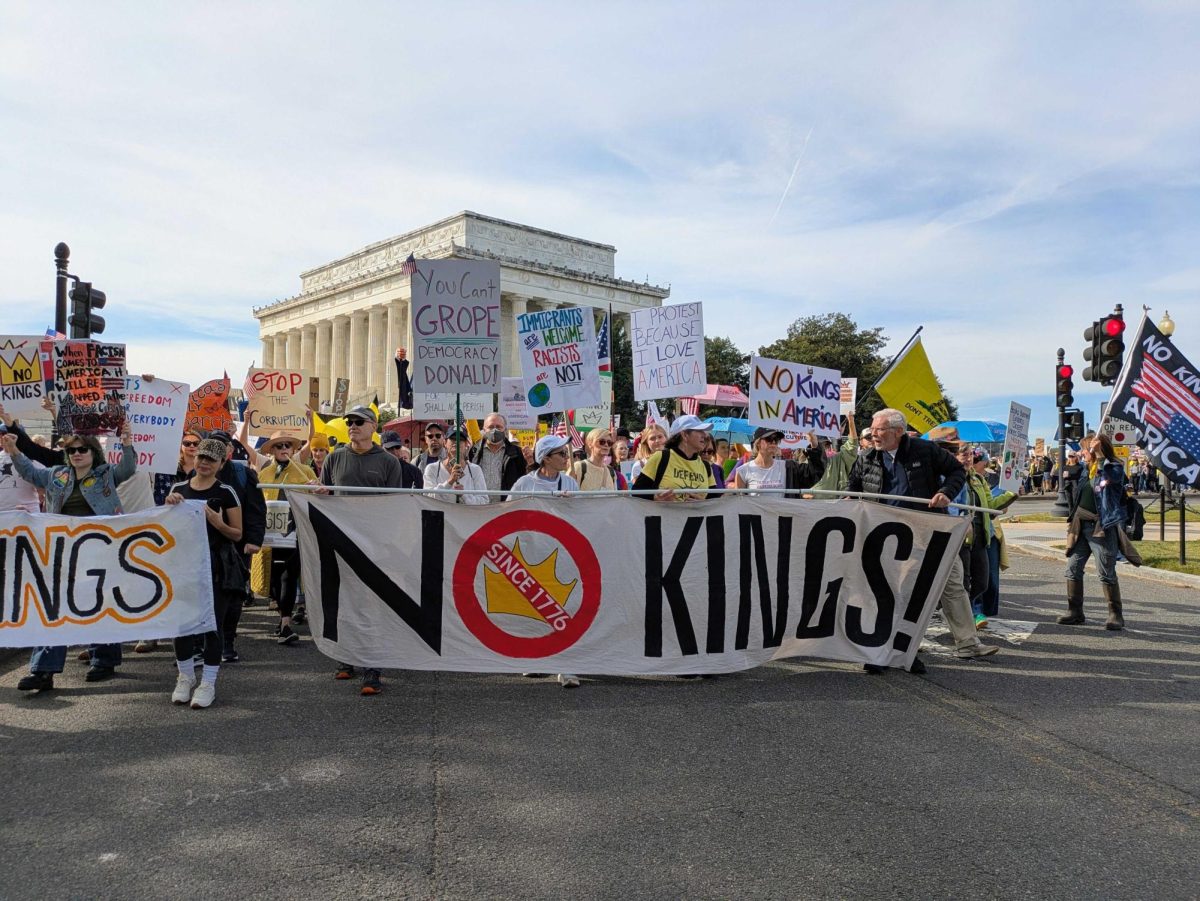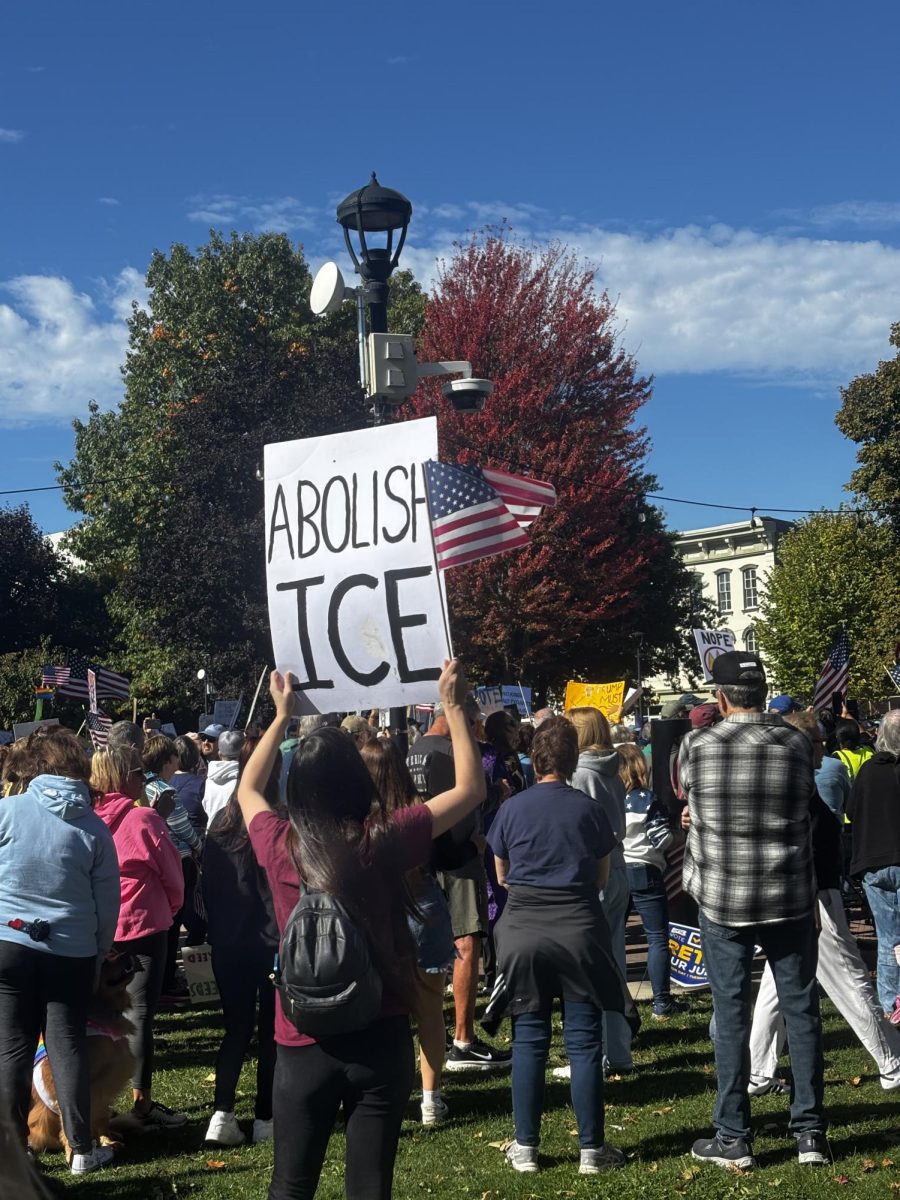Sahay takes a multifaceted approach to politics and life
Political science is just the beginning of this professor’s versatility
Anjali Sahay, Ph.D., has worked at Gannon since 2008. An Indian immigrant, she emphasizes the importance of focusing on the relations between countries, as well as how the government works both within countries and between them. Sahay earned her Ph.D. in international studies from Old Dominion University and has been featured in a number of significant publications, her most proud being TIME Magazine for the 2020 election.
February 23, 2021
Anjali Sahay can be described in one word: multifaceted. An educator, author, researcher and artist, Sahay is a woman of many aspects and accomplishments.
Sahay has been working at Gannon University since 2008, when she began as an assistant professor of political science and international relations. Since then, she has held the roles of program director of political science, program director of international studies and president of Gannon’s Faculty Senate.
She was promoted to associate professor and granted tenure in 2014. As shown by her involvement in the programs, Sahay is passionate about political science and international relations.
“I’m really drawn to relations between countries, government structures and how the government works, not only within countries but between countries,” said Sahay, who earned her doctorate in international studies at Old Dominion University.
“What’s exciting to understand about political science is it’s not just about the U.S. government, it’s also about the United Nations, and teaching students how to be diplomatic and work with each other in consensus, and how to come to solutions to world problems.”
Sahay has also been involved in the Model UN for two decades, not just at Gannon but also at numerous other institutions. She believes it is one of the best learning experience a student can have.
“What I really like about the program is not only are you learning about world affairs and finding diplomatic solutions to world problems, but it also teaches great communication skills and it brings out leadership skills,” she said.
According to Sahay, one of the most important aspects of Model UN is the opportunity to learn to empathize with groups that may be unfamiliar.
“A lot of Model UN is about role play and simulation,” Sahay said. “It is really important because you get into someone else’s skin. You could be from one country but you have to pretend to be from a different country. It helps you think outside the box.”
The inspiration for much of Sahay’s work comes from her background as an Indo-American. Sahay immigrated to the U.S. as an international student in the pursuit of higher education.
“I really wanted to explore the dimensions related to migration, so I had the personal experience of what it means to go to a different place and settle down,” Sahay said.
Sahay is passionate about helping those of Asian American or Pacific Islander origin, especially through her involvement in Gov. Tom Wolf’s Advisory Commission on Asian Pacific American Affairs. As a member of the commission, Sahay serves as an ambassador to the community.
“Showcasing art to the local population is one thing, but now I am getting a good overview of what it is like for Asian Americans in the United States and in Pennsylvania and some of the issues that concern them,” Sahay said. “Our job here on the commission is to really highlight any issues or problems, but at the same time to invite a sense of cultural heritage and pride of the Asian American community in the state of Pennsylvania.”
Because of her background, Sahay’s research interest is global migration. She especially focuses on the experiences of Indo-Americans and diaspora.
Her book, which was released in April 2009, is titled “Indian Diaspora in the United States: Brain Drain or Gain?” and discusses the migration of people from India to the U.S. Sahay argues that many countries benefit from the immigration of their highly trained and intelligent citizens.
“In my book, I talked about some of the benefits for the home countries when people do migrate,” Sahay said. “You can’t stop people from moving.”
While migration is inevitable, Sahay said that Indian immigrants bring value to the countries they immigrate to and bring greater awareness of Indian culture and political needs.
“I looked at the Indo-American community, often dubbed as the model minority group, and how they are taking their high wealth power and putting it towards political causes as they try to lobby for things that are of importance to the home country,” Sahay said.
Sahay has also been featured in many significant publications, including CNBC, Financial Times, the Pittsburgh Post-Gazette and the Erie Times-News. But according to Sahay, the most significant of these was TIME Magazine.
Sahay was featured in two articles in TIME Magazine: one discussing what a Biden presidency means for Indian-U.S. relations, and the other discussing the election of Kamala Harris as vice president. Harris’ mother is an Indian immigrant, which Sahay said shows the opportunities that are available for immigrants and their children.
“Her selection as the vice president is an important message to many immigrants and their children because it tells them that anyone who works hard can get selected,” Sahay said.
The importance of this message to Sahay manifests itself in her involvement on the College of Humanities, Education and Social Sciences’ Racial Justice Task Force.
“This is central to my values and belief system, and I am very excited to serve on this with my colleagues,” Sahay said.
Sahay encourages not only immigrant students, but all of her students and advisees. Brooke Hepditch, a junior political science major, has found support in Sahay.
“Dr. Sahay has encouraged me to step outside of my comfort zone not only in the classroom, but in the real world too,” Hepditch said. “She has influenced me to make decisions that will help me reach my goals and pursue my dreams.”
Julia Neumann, a freshman public service and global affairs and public relations major, also spoke to Sahay’s support for her students.
“Dr. Sahay has always been someone you can talk to about almost anything,” Neumann said. “She’s a very fun, engaging person and she makes you want to talk with her.”
Another important facet of Sahay’s cultural background is her training in Kathak, a classical dance form that originated in northern India.
This is influential in Sahay’s personal life and identity, and also in the promotion of cultural aspects to the local community.
“Not only is it helping me reconnect with my roots, but at the same time I am happy to showcase a different type of cultural art form to the local population,” Sahay said. “It helped the next generation revive a sense of dual-culturalism.”
Sahay is also invested in making sure learning is fun. One way that she does this is through the use of technology. She frequently implements websites, videos, Kahoots and other games into lessons.
“We make sure we offer classes that are both exciting and relevant to our students,” Sahay said. “I’ve tried new methods where students are trying new things too. I think students like technology and I think we should enhance it more.”
Sahay also makes learning engaging through her enthusiasm for the subject matter and her encouragement of students to be involved and invested in the material, according to Maya Bywater, a dual enrollment student.
“Her passion for what she teaches and her willingness to allow open debate are what make her class fun,” Bywater said. “I was in her class on U.S. politics during the 2020 presidential election, and her excitement about being able to vote for the first time as a U.S. citizen really made the election seem less overwhelming and depressing.”
According to Sahay, the School of Public Service and Global Affairs has been integral in creating an exceptional learning experience for students in the various programs within the school.
“Political science falls under one of the programs in the School of Public Service and Global Affairs and we all want to work together to create a great environment for students,” Sahay said.
Above all, Sahay is devoted to service. Gannon has been key in giving her opportunities to live out this commitment.
“I have always had those viewpoints, but I really like that Gannon has such a service culture,” Sahay said. “It helps us make those connections, and I feel like they make it possible for us to do meaningful work in the community.”
ANNA MALESIEWSKI







